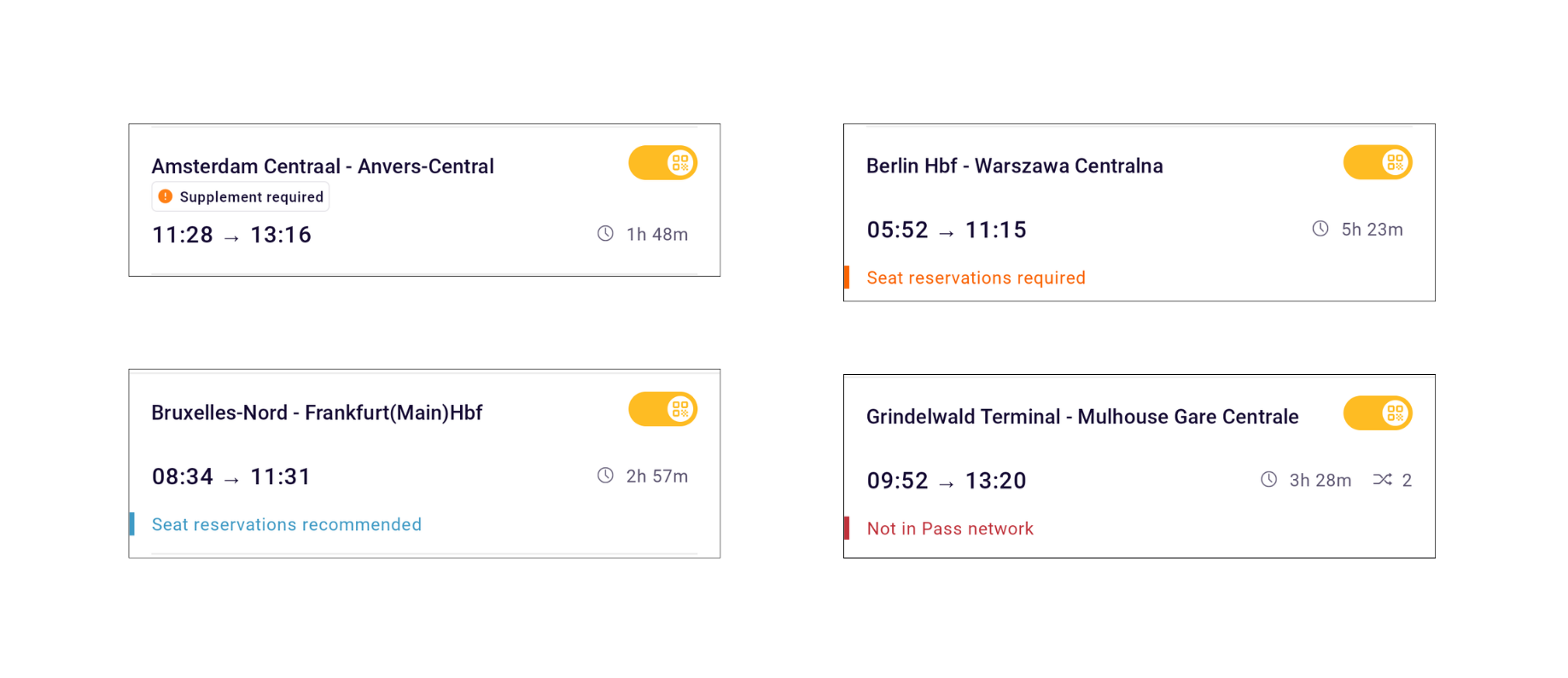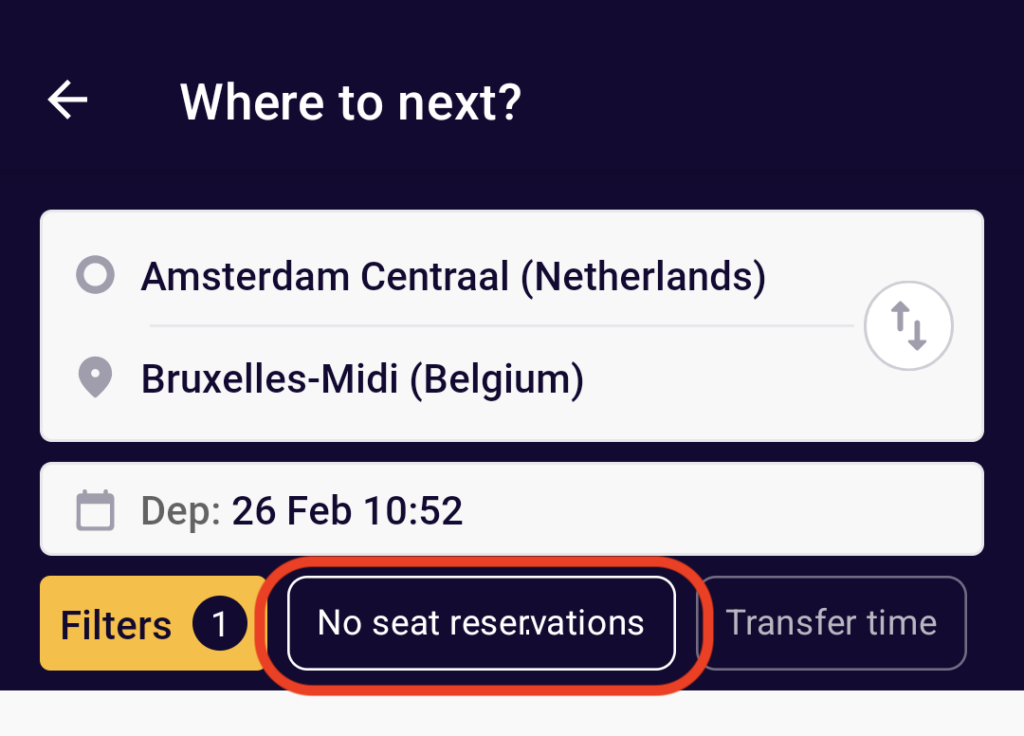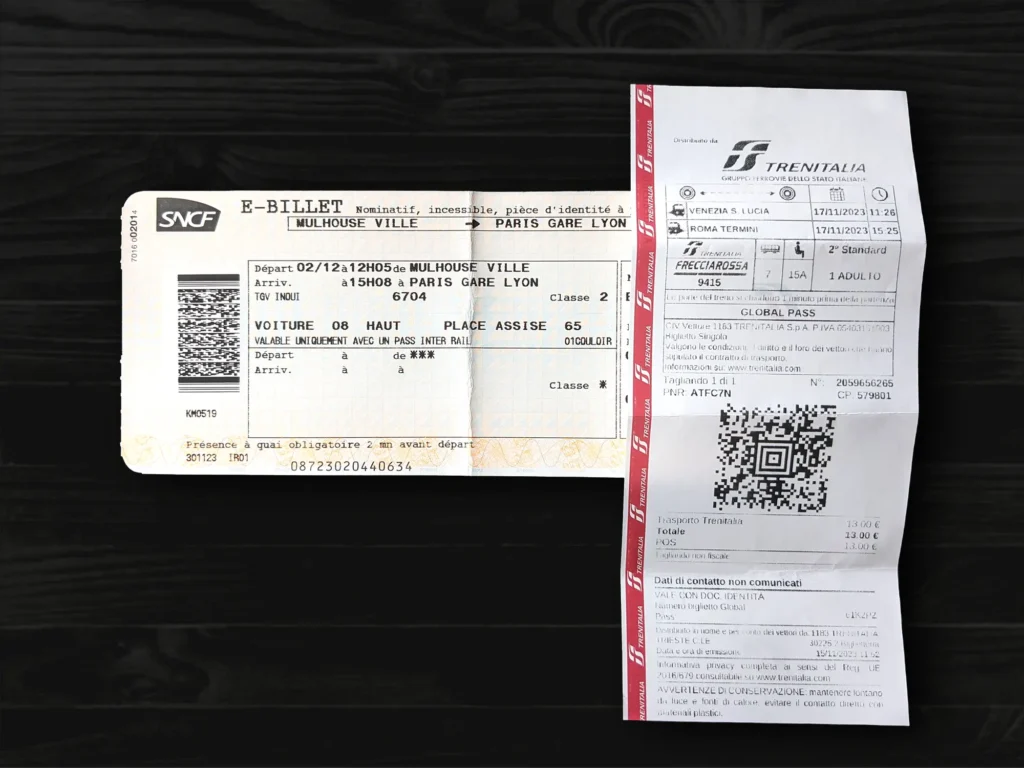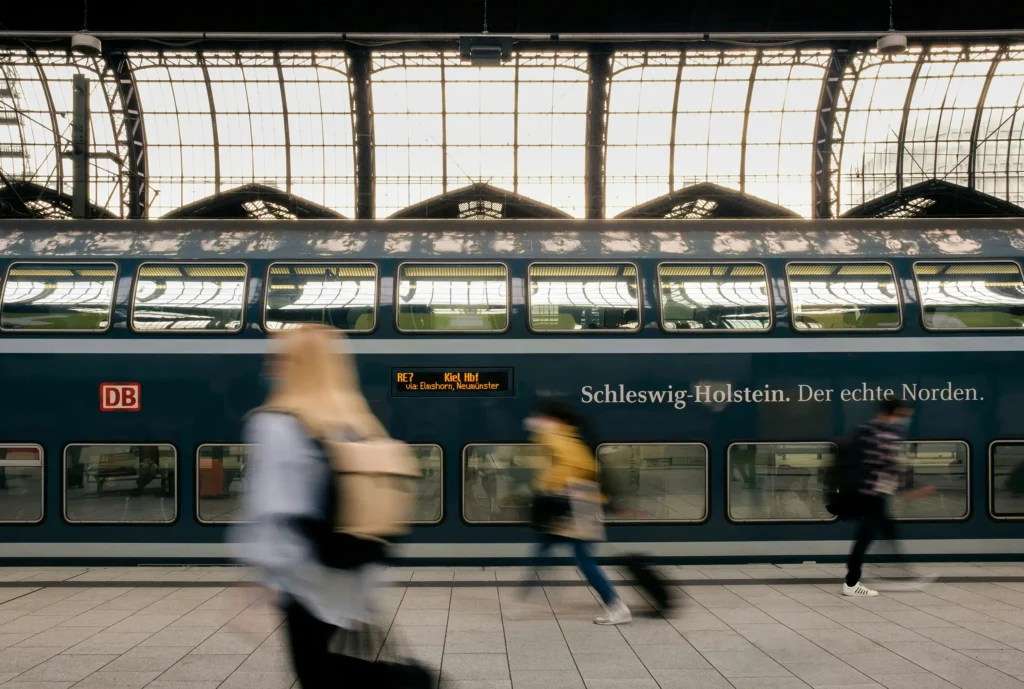What’s the difference between ‘required’ seat reservations and ‘recommended’ seat reservations?
You will notice in the Rail Planner app that some routes will have labels, here’s a breakdown of what these labels mean:
Supplement Required: some networks require an additional supplement to ride the train (different to a seat reservation) This is common for the high speed trains in The Netherlands.
Seat Reservations Recommended: Eurail will indicate some of the more popular train routes they estimate having more demand therefore purchasing a seat reservation will help ensure you get a seat. We didn’t opt to pay for any recommended reservations and were ok when we visited during October – November but this should be something to consider if you’re visiting during a high peak time.
Seat Reservations Required: You MUST purchase a seat reservation to ride on this train.
Not in Pass Network: This indicates that your Eurail Pass does not cover this route and you will need to purchase a ticket for this journey. This only happened to us once for the train between Interlaken and Grindelwald which is not covered.

A tip: If you’re unsure about whether you should book a non-required seat reservation, take a look at the entire route and see if you’ll be boarding from the origin. Boarding at the train’s starting point increases your chances of securing a seat compared to boarding at a later stop.
How do I pay for a seat reservation?
Seat reservation fees are paid directly to the railway carriers, payment can be made via;
- The railway carriers’ website
- In person at the train station (This is how we ended up booking our reservations)
- The Rail Planner app
- By Phone
How to save money on seat reservations in Europe
If you’re looking to save money on seat reservations for your travels in Europe, here are a couple of tips to consider:
Check alternate routes
Consider checking alternate routes when planning your journey. Sometimes, opting for a slightly longer or less direct route can help you save on seat reservations (these will typically be regional trains). While this might extend your travel time, the potential cost savings could make it a worthwhile choice, particularly if you have flexibility in your schedule.
To find trains that don’t require reservations, you can use the “no seat reservations required” filter when searching on the Rail Planner app.

Book directly with the railway carriers
Booking directly with railway carriers will be more affordable than using third-party websites. Eurail itself operates as a third-party reseller, and booking through them will incur an additional fee of €2. While this amount may seem insignificant, it will all add up. For instance, the extra amount spent on seat reservations for just three trains across Italy could instead be used to enjoy an Aperol in Venice.
Choosing to book directly with the carriers helps you steer clear of any extra charges or markups.

How much do seat reservations cost?
Each national railway in Europe has its own set of rules and regulations and the price of a seat reservation will also vary from country to country. It’s important to make note of the seat reservation labels in the Rail Planner app so you can plan ahead.
Here’s a breakdown of the cost of reservations for each train we boarded that required one (pricing per person):
Seat Reservation costs in Poland:
Berlin > Warsaw
€ 4.90
Warsaw > Krakow (we chose the slightly longer but cheaper train option)
1 zł
Krakow > Budapest (twin share sleeper train)
150.15 zł
Seat Reservation costs in Italy:
Venice > Rome
€ 13
Rome > Pompeii (return)
€ 26
Rome > Florence
€ 13
Florence > Milan > Zurich
€ 16
Seat Reservation costs in France:
Mulhouse > Paris
€ 20
Total amount we paid for seat reservations
€ 127.84 per person
When should I book my seat reservations?
Once you’ve organised your schedule you should book your seat reservations as soon as possible. Seat reservations are typically available for booking between 3 to 6 months before the journey.
Booking early is even more important during peak times, with Eurail recommending making train reservations two months in advance during the summer period (May to September) to guarantee yourself a seat.
How to know if a seat is reserved
When boarding a train (that doesn’t have required reservations) it’s essential to check for signs near the seat numbers. It will typically indicate if a seat has been reserved. Typically, there will be a digital screen or a physical slip of paper displaying someone’s details if the seat has been reserved.

Feature Image courtesy of Unsplash






